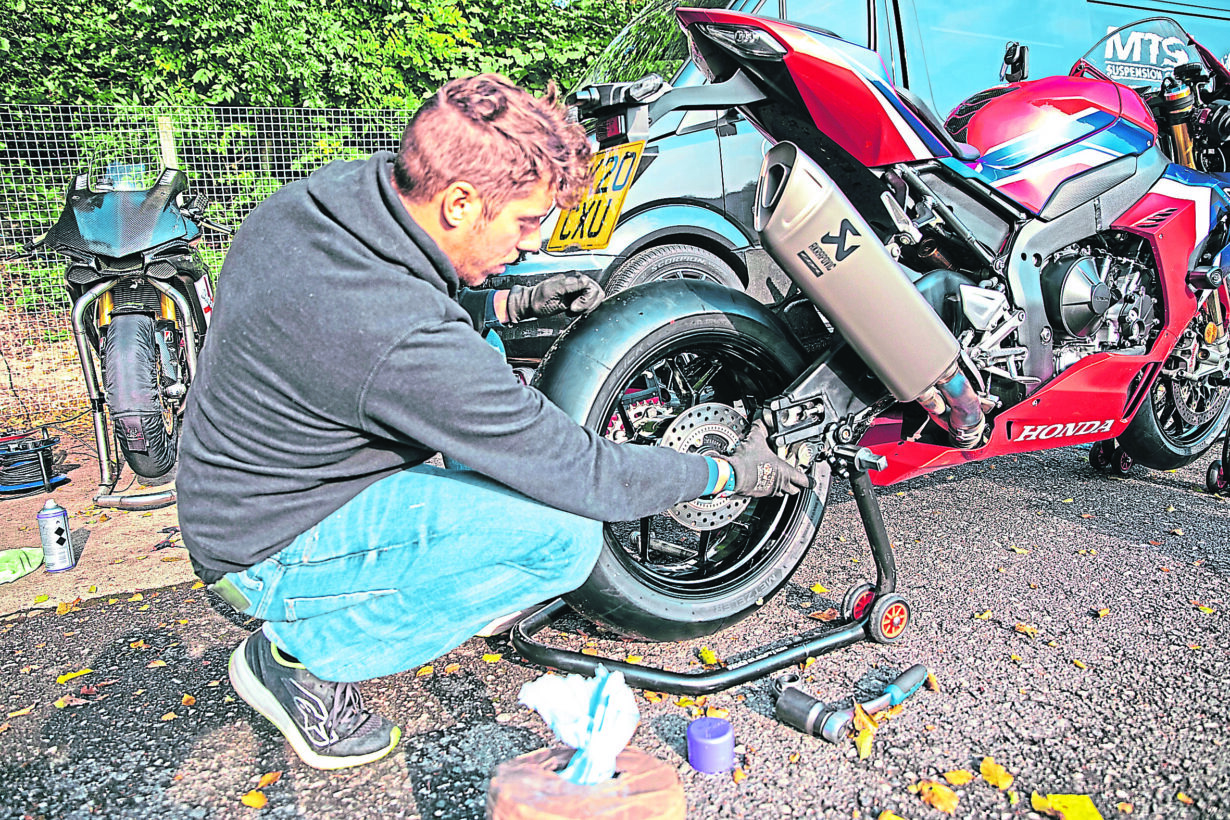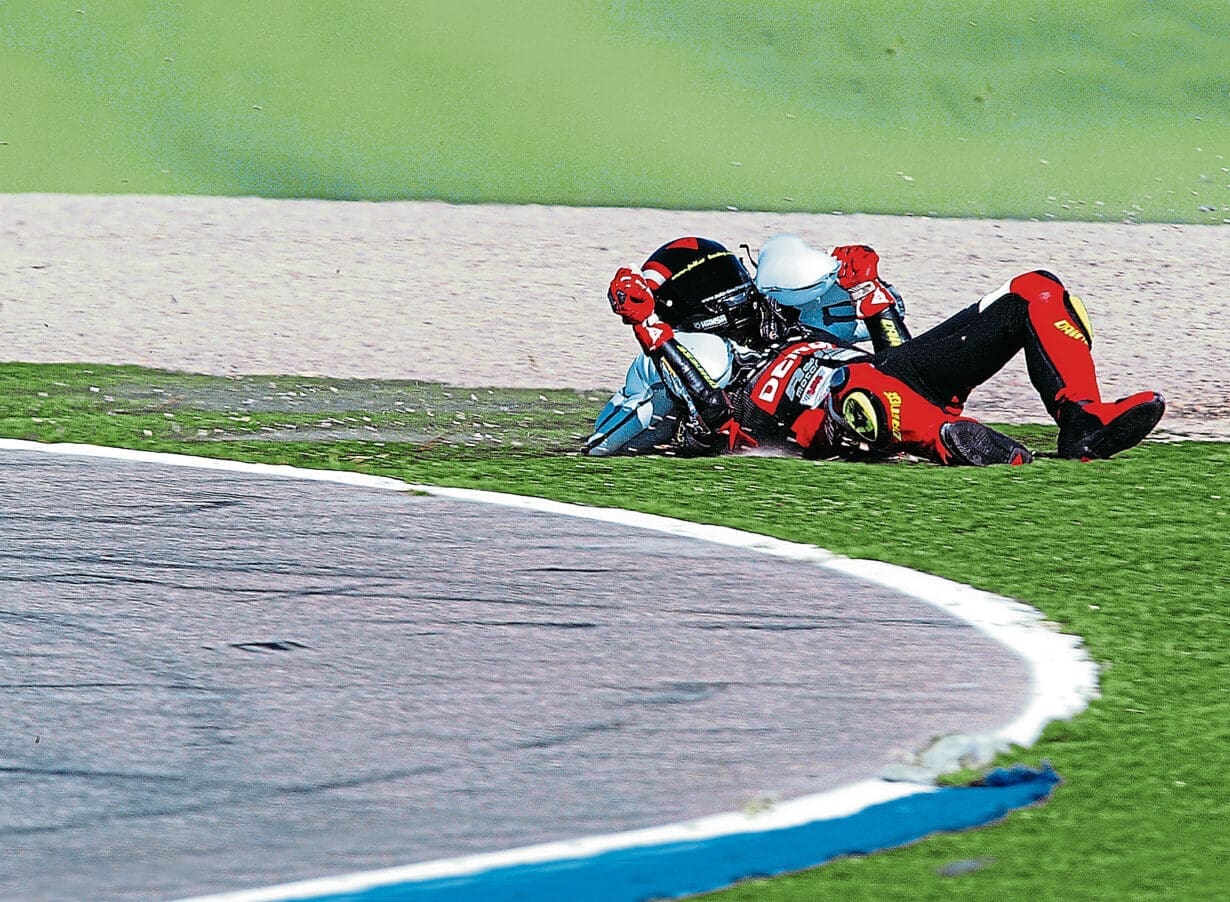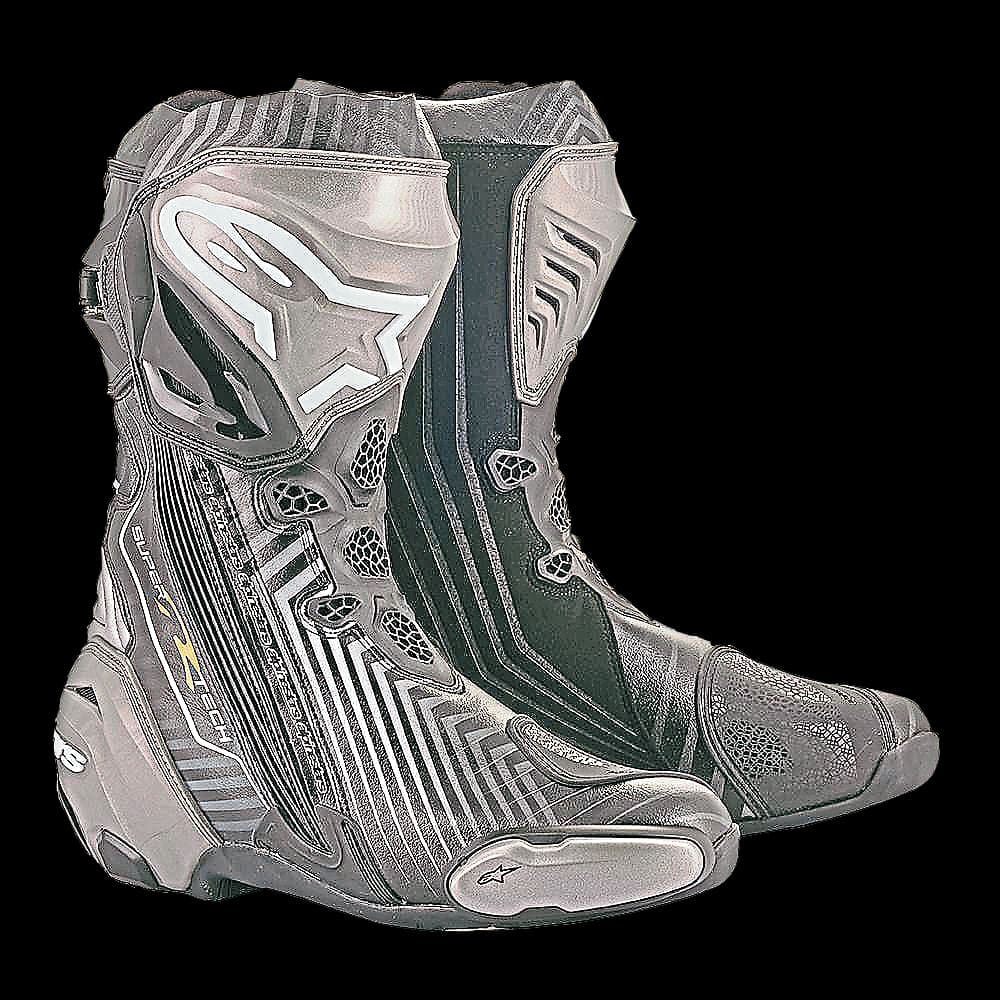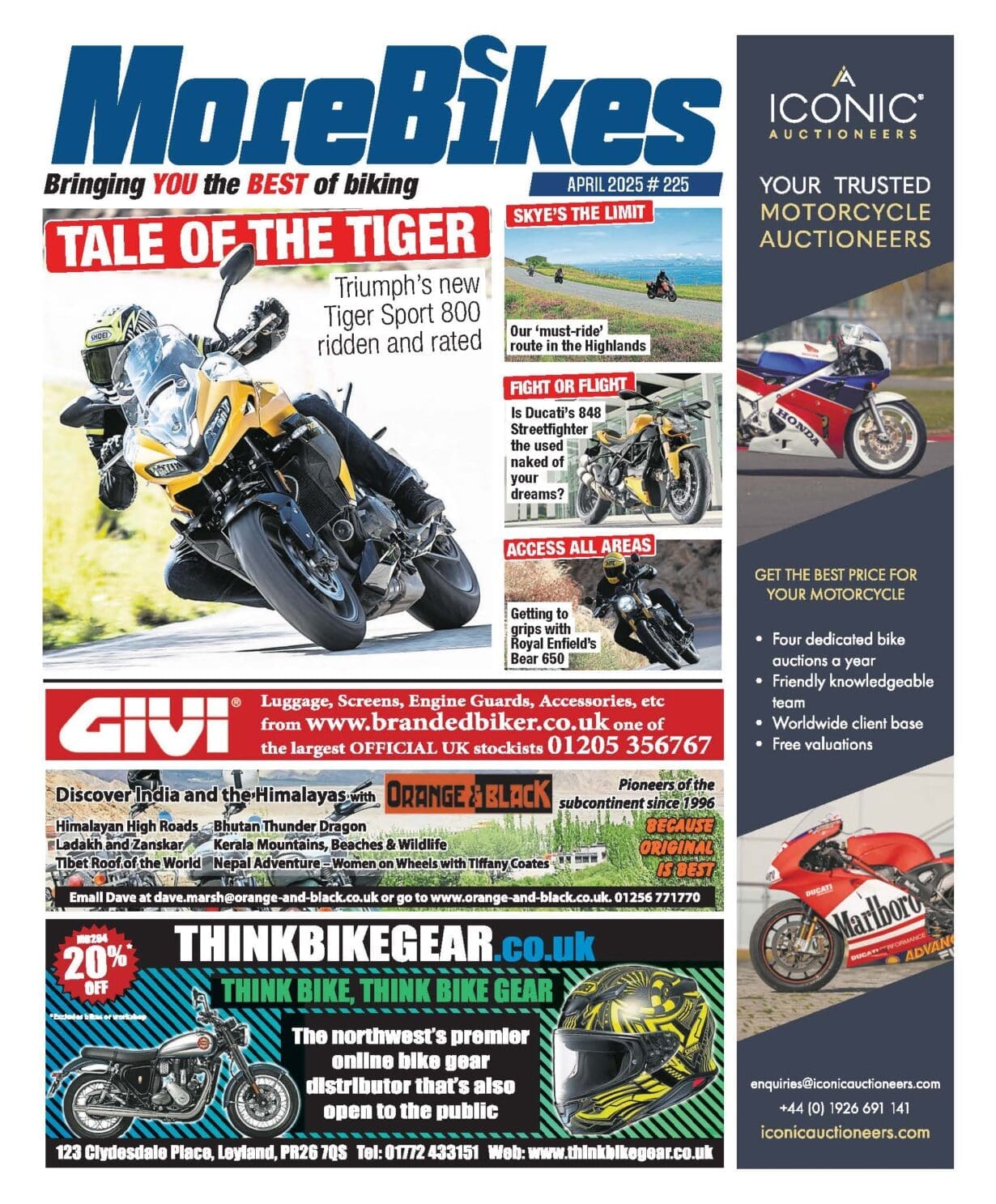Riding on track provokes a lot of questions, be it related to riding, bikes, or even products. Thankfully, Dean Ellison’s on hand to tackle your concerns and dish out advice you can depend on
Other than being asked multiple times at every trackday: “How many sighting laps?” and “Which is the first group out?”, I receive a lot of messages requesting advice – and I’m starting to see the same questions reoccurring. These are some of the more common ones…
Should I use tyre warmers on wet tyres?
Yes, 100 per cent you should. Whether it’s wet or dry, the more heat in your tyres, the more grip you get – that’s until you get to the other end of the scale and cook your wet tyres on a drying track, or if you’re riding in an extremely hot climate and everything feels a bit greasy, but that’s not likely to happen here in the UK.
My response to this question is the same to everyone. Are your wet tyres warm when you finish the session? The answer is always yes… in which case, why not begin the session with warm tyres? Start out with the same level of grip and feel you want at the end; going straight out with warm rubber will give you more confidence to go fast from the off. The heat will be maintained or could even increase as you start to push. If you choose to start out with cold tyres and build in the heat, you’re already wasting valuable laps, but also at risk of crashing the first time you put some lean into it. You might feel like the heat is there under braking and acceleration, but you might not have enough heat on the very edge, and that puts you in danger of losing traction.

As mentioned, you don’t want your wet tyres too hot, though. If you pre-heat wet tyres to the same temperature as slicks, they will give too much movement. The grip level will start out amazing, but you just won’t be able to maintain that heat and eventually you will start to lose grip as the tyre cools.
My best advice is to set your warmers at 50 degrees if they have that function or just pre-heat them for about 30 minutes before you are due to go out, and then you can go faster from the off – and you really should go faster from the off; if you try to build up your pace, then the edge of the tyres will start to cool and that could catch you out.
You can use your tyre warmers to help look after the rubber as well. Lots of continuous heat cycles eventually have a negative effect on the grip performance of the rubber, so I always turn on the warmers 30 minutes before my first session, wrap the warmers back on to my wheels immediately after each session (without turning on) so that the core temperature doesn’t drop too quickly, and then switch back on 30 minutes before the next session. I do the same at lunch and at the end of the day; as soon as I come in from the track, I wrap the wheels and allow then to cool down at a much slower rate. £400-ish is a lot for a set of tyres, so I want to look after them.

Would I recommend driving to a No Limits Euro event?
I often drive to the Euro events, but only if I can do multiple events over the course of one trip. It’s expensive because of ferry/train costs, plus the extra fuel and toll fees through France and Spain, so for my job I have to ensure there’s plenty of work coming in to cover that. It can also be quite tiring if you want to do the distance in a short timeframe. That said, it is nice to have whatever tools and equipment you might need.
The cheapest and easiest way is obviously to utilise the transport company and stillage system arranged by No Limits. There’s more than enough room on the stillages provided and if you really want to take more, just pay a little extra and have a full stillage for yourself if that option is available. That’s far cheaper than driving.
You would also need to look at the documentation required since Brexit. I use a Returned Goods Relief Form. Some race teams use a Carnet; this is to show border control what you’re taking out, and the same must come back in.
Do you wear an airbag vest or suit?
I didn’t until 2021, although I’ve tried a few on over the years and am very much behind the technology. There are three systems that stand out for me and they all have their place.
Each system is slightly different and it’s not until you really get looking into the technical side that you appreciate what’s involved.
It’s also worth noting that anyone I know who’s crashed with airbag protection will now not ride without it.
I’ve been wearing the Dainese D-Air suit, but there’s also the Alpinestars Tech-Air Race Vest and the In&Motion system, as used by a number of manufacturers.

Dainese is the pioneer of this technology. I remember seeing footage of its early systems and thought it seemed a bit far out, but the firm has come up with a really effective system that has prevented a lot of serious injuries over the years. D-Air gets my vote because of the way the actual airbag is constructed. Dainese uses a patented ‘Microfilaments Technology’ which ensures that when the airbag deploys, the air inside inflates the bag in a balanced way that makes the bag extra-firm on impact. Secondly, because it’s built into the suit, it’s very comfortable and you can’t feel the airbag at all.
Just a final note. The new UK importer is now able to manage the regs and a lot of the repairs, which has been quite difficult to arrange since Brexit.
How many laps should I scrub new tyres in for?
None if the tyre is pre-heated and you’re on track. I don’t remember anyone from the tyre manufacturers or race series tyre support advising me to scrub tyres in when I raced at BSB, WEC or WSBK level. In fact, a race tyre gives optimum grip for just a few laps so don’t waste those valuable laps, especially if you’re racing. The same cannot be said for cold road tyres, though; these will need scrubbing in, with the first few metres being the most important. I’ve heard of so many highside crashes from customers just setting off from the garage after having new rubber fitted. You should gradually build your speed and the forces from acceleration and braking for a few laps, I’d say.
Most new tyres are made with a release agent so that they easily come out of the mould after the final manufacturing process. Most of that release agent on the tyre surface is removed by the manufacturer. However, a small amount is still visible. Basically, if your tyre is shiny, it’s manufactured with a release agent. Next time you watch a BSB qualifying session or maybe the WEC, pay attention to riders who pit for a tyre change and watch how fast their out lap is.

What are the best boots for someone with big calves?
This may seem a little bit random, but I get asked this every week and it’s important to be comfortable when you’re out on track. What might feel just a little uncomfortable when you try it on in the shop will only get worse and likely be more painful as time goes by. Leather suits and gloves will always stretch and bed in, but it’s impossible for a leather/plastic boot to give in the same way. Here are my top three:
1st – Dainese Axial D1 inner boots would be the best option because they actually finish below calf height and sit inside the leather suit. This boot offers a very high level of ankle support and the Dainese suit zips over the boots to make for a very comfortable finish. I know not everyone wears Dainese, but there are a few leather alteration specialists who can modify the legs of any leather suit to fit this set up.
2nd – TCX RT-Race, Race Pro and Race Pro Air have always been known in the trade as a complementary boot for the big calf. It works because the half-inner boot with laces combines with a soft microfibre gaiter in the calf area to allow for a perfect fit and plenty of give.

3rd – Alpinestars Supertech R 2021 model onwards boots have had an upgraded main zip and widened accordion stretch panel. This boot must be one of the bestsellers just on looks alone and has always been very comfortable, but the zip was always a weak point if riders had big calves. A wider accordion stretch panel has made all the difference.
Get on track with Dean…If you want to up your game on track, Dean’s the man you want in your pitbox. An ex-World and BSB spec racer, he’s also honed his craft in endurance racing and has since gone on to establish, arguably, the best track riding tuition on offer here in the UK. Check out his page on Facebook and drop him a line if you’re after some next-level rider coaching: www.facebook.com/deanellison42


